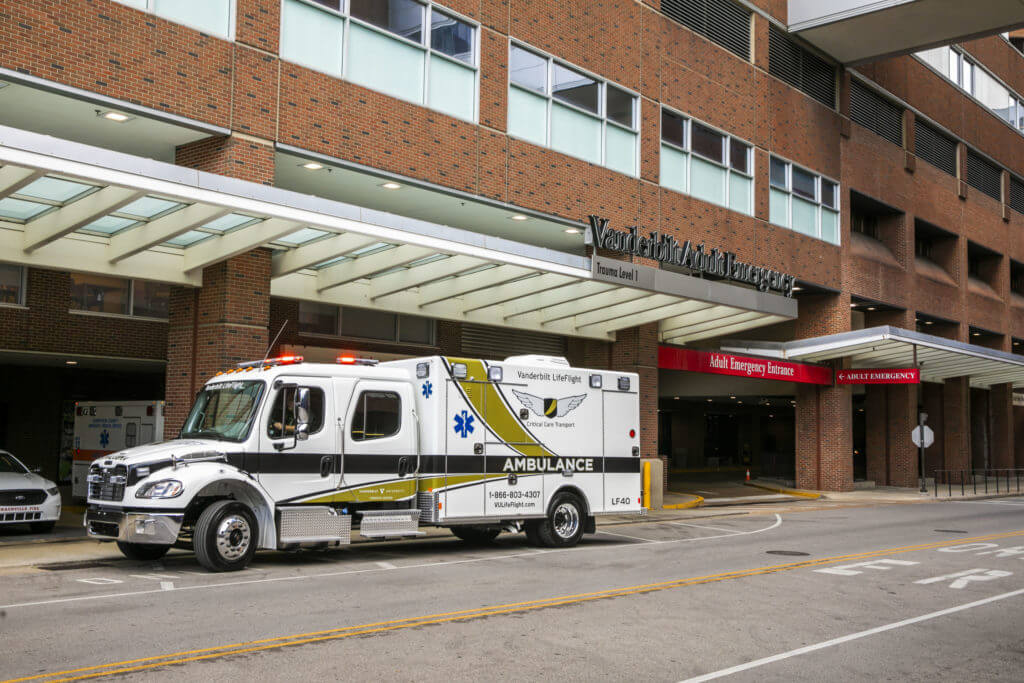Vanderbilt LifeFlight has expanded its ability to transport critically injured patients from the air to now include two new specialized ambulance and personnel for critical care ground ambulance transport.

For the past 35 years, LifeFlight has offered critical care air transport via one of its helicopters, and it has now expanded that ability to include ground transports via one of its new, large specialized ambulances.
The new critical care ground ambulances will help provide care to adult patients that can’t be flown due to severe weather, and adult patients that have conditions that don’t require emergent air transport. The ambulances will not replace the current neonatal and pediatric critical care ambulances operated by the Monroe Carell Jr. Children’s Hospital at Vanderbilt – they will operate in a similar manner but focus the care on adult patients needing critical care ground transport.
Much like on the helicopter, a dedicated specialized team of three will provide care for these patients – consisting of an advanced emergency medical technician, a critical care paramedic and a critical care nurse from the adult emergency department.
One critical care ambulance will be staffed 24/7, while the other will serve as backup. The ambulance is based at Vanderbilt University Medical Center and will respond to a 150-mile radius from the hospital. Additionally, it will be able to transport LifeFlight patients transported via airplane from the Nashville airport to the destination hospital.
“We are very excited to be able to offer this to our patients and transferring hospitals,” said Jeanne Yeatman, RN, BSN, MBA, EMT, Associate Nursing Officer, Vanderbilt LifeFlight. “We’ve been working on this project for the last several years and we are so happy to see it come to fruition.”
One set of patients that will benefit from this new mode of transport is those that need extracorporeal membrane oxygenation (ECMO) treatment. This is a very specialized procedure that uses a pump to circulate blood through an artificial lung back into the bloodstream. ECMO acts as an artificial heart and lung for the patient during ECMO therapy.
“We are thrilled to be able to partner with our colleagues in the Vanderbilt Heart and Vascular Institute to be able to train our expert staff and work with the VUMC ECMO teams,” said Stephan Russ, M.D., associate chief of staff, Vanderbilt University Medical Center.
The mode of transport typically used for ECMO patients includes helicopter, fixed-wing plane, or ambulance and depends on several factors including distance and weather. Vanderbilt LifeFlight will now be able to quickly determine what is best for the patient and mobilize the best team and transport option. With the additional two ground specialized ambulances, Vanderbilt LifeFlight has a fleet of 22 transport modes – 13 ground ambulances, eight helicopters and one airplane.









